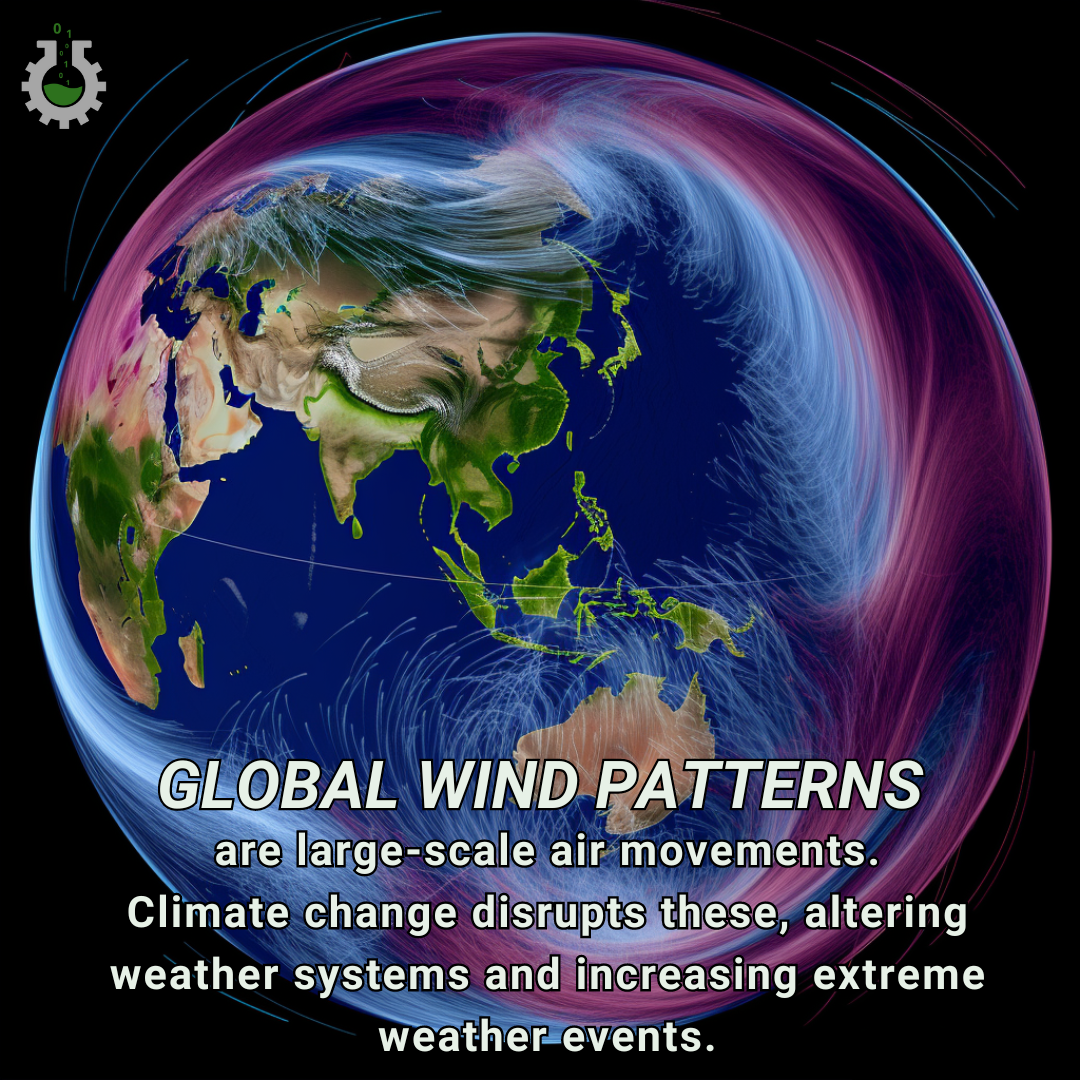July 11, 2024
Climate Change Poster Collection of the Day – Global Wind Patterns
Book a Demo
Today’s Climate Change Poster Collection highlights Global wind patterns, the large-scale movement of air across the Earth’s surface, are fundamental to the regulation of our planet’s climate and weather systems. These patterns are driven by the uneven heating of the Earth’s surface by the sun, creating pressure differences that cause air to move. Traditionally, these patterns have been relatively stable, with predictable trade winds, westerlies, and polar easterlies shaping weather and climate across the globe. However, climate change is increasingly disrupting these established wind patterns, with profound implications for weather, ecosystems, and human societies.
As global temperatures rise due to increased greenhouse gas emissions, the differential heating of the Earth’s surface intensifies, altering pressure gradients and shifting wind belts. For instance, the Hadley Cell, which typically circulates air between the equator and mid-latitudes, is expanding poleward. This expansion is leading to changes in precipitation patterns and contributing to the drying of subtropical regions. Such a shift can exacerbate drought conditions in areas like the Mediterranean, southwestern United States, and parts of Australia, severely impacting agriculture, water resources, and local economies. Crops that rely on consistent rainfall patterns may fail, leading to food shortages and increased competition for water resources, which can, in turn, lead to socio-political tensions.
Additionally, the polar jet stream, a fast-flowing ribbon of air circling the polar regions, is becoming more erratic as the Arctic warms at an unprecedented rate. This destabilization can lead to extreme weather events such as prolonged cold spells, heatwaves, and intense storms in the mid-latitudes. For example, the “polar vortex” phenomenon, where frigid Arctic air plunges southward, has been linked to disruptions in the jet stream. Such extreme weather events can result in significant economic costs, damage to infrastructure, and threats to human health and safety.
The changing wind patterns also affect ocean currents, which are closely linked to wind-driven surface circulation. Alterations in these currents can disrupt marine ecosystems, influence fish migration patterns, and impact global climate systems further. For instance, changes in the Atlantic Meridional Overturning Circulation (AMOC), a critical component of global ocean circulation, could lead to drastic climate shifts in Europe and North America. Warmer ocean temperatures can also exacerbate the melting of polar ice, contributing to sea-level rise and the loss of habitat for species such as polar bears and seals.
Moreover, the disruption of wind patterns has implications for renewable energy resources, particularly wind power. Changes in wind speed and direction can affect the efficiency and reliability of wind turbines, posing challenges for energy production and grid stability. As countries invest in renewable energy to combat climate change, understanding these changes becomes crucial for planning and optimizing energy infrastructure.
Understanding and predicting these changes in global wind patterns is crucial for developing effective climate adaptation and mitigation strategies. This requires advancements in climate modeling and increased observational data to capture the complexities of atmospheric dynamics. International cooperation and policy frameworks must also be strengthened to address the global nature of these challenges.
As we continue to study these complex interactions, it becomes increasingly clear that addressing climate change requires a holistic approach that considers not only temperature increases but also the intricate web of atmospheric dynamics that sustain life on Earth. By integrating knowledge from meteorology, oceanography, ecology, and social sciences, we can better anticipate the cascading effects of disrupted wind patterns and develop resilient strategies to safeguard our planet’s future. The urgency to act is underscored by the growing frequency and intensity of extreme weather events, which serve as stark reminders of the interconnectedness of our climate system and the far-reaching impacts of human activity.
Discover an inspiring collection of climate change poster.



